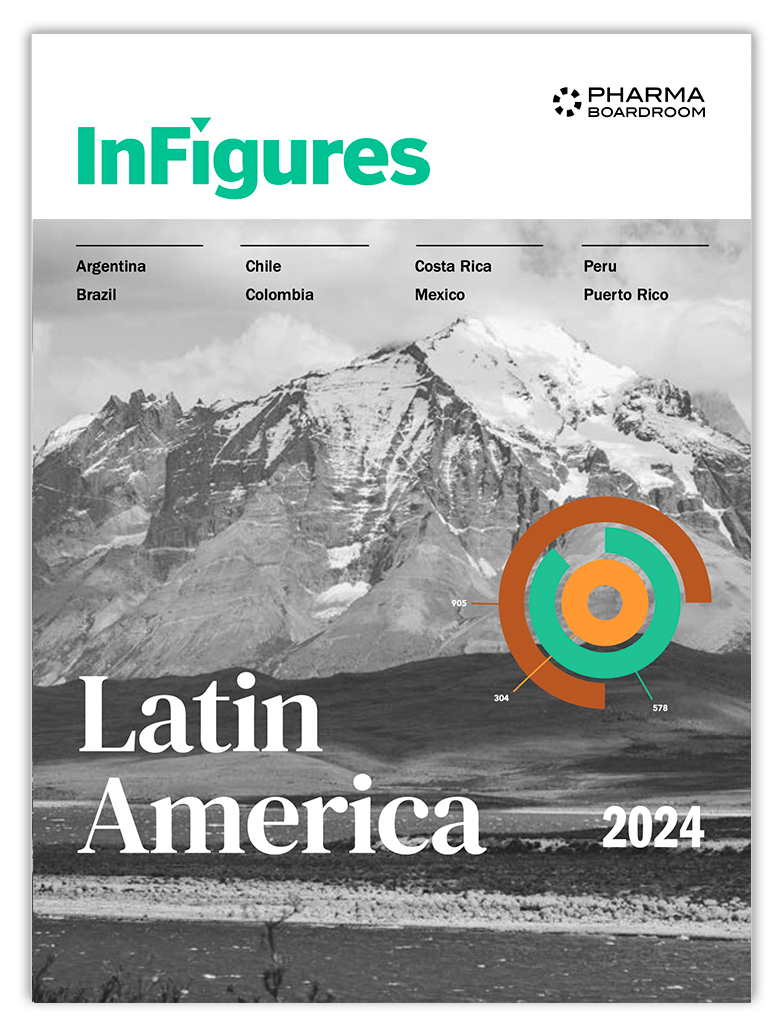Latin America is a rapidly growing market for the global medtech industry, offering significant opportunities. With a population of over 650 million people, the region boasts a large and growing middle class that are showing increasing demand for high-quality healthcare services and medical technologies. In recent years, the Latin American medtech market has grown at a rate of over 10 percent annually, with a market size estimated to reach USD 16 billion by 2025. Additionally, several Latin American countries have implemented healthcare reforms aimed at improving access to medical technologies, further driving growth in this dynamic region. The regional heads of two of the world’s biggest medtech companies – Siemens Healthineers and Medtronic – weigh in on some of the key trends emerging in LatAm today.
Digital Adoption
While not perhaps as well known as an early adopter of digital solutions as East Asia or the Middle East, Medtronic’s SVP and President for LatAm and Canada Hugo F. Villegas is keen to note the ways in which LatAm is embracing some of his firm’s most cutting-edge new technologies.
“Digitalisation and artificial intelligence (AI) are already realities that will define the winners of the future,” he states. “Medtronic has launched several initiatives in this regard and our second Healthcare Executive Forum in 2022, bringing together some key healthcare opinion leaders in the region, was focused on digitalisation in healthcare.”
Headquarters is aware of LatAm’s capabilities, our physicians’ desire to be part of global clinical studies, and their partnership for local approval of our latest technologies
“The global acquisition of Digital Surgery in 2020, which creates data analytics, AI, and training programs for the operating room, is allowing us to build up a solid database of ‘dos’ and ‘don’ts’ around particular operating procedures and enforce best practices.
“Additionally, AI will help expand access through virtually training up more physicians to work with new technologies; one of the main barriers to access in LatAm today is this lack of knowledge. AI will also free up healthcare professionals from administrative tasks – on which they currently spend 70 percent of their time – to focus on the patient-facing aspect of their job. Digital consultations, improved diagnostics, and better and quicker interpretation of medical images are all added benefits of AI and digitalisation.
“In LatAm, we just launched our ‘GI Genius’ intelligent endoscopy module, a first-to-market, computer-aided polyp detection system powered by AI. This system detects more than 50 percent of the polyps not detected by endoscope and brings huge value.
“Finally, we have our robot assisted surgery system ‘Hugo’ (not named after me!), which is also creating big new opportunities. The first countries where ‘Hugo’ was used were Chile and Panama. Headquarters is aware of LatAm’s capabilities, our physicians’ desire to be part of global clinical studies, and their partnership for local approval of our latest technologies.”
Screening & Progress Towards a Holistic View of Disease
Siemens Healthineers’ LatAm President Guilherme Marques feels that LatAm has made some good steps in terms of preventative healthcare through disease screening programs but asserts that there is much more to be done to build a holistic approach in the region.
We just need to better connect the dots, not only invest in prevention but really convey that we can reduce death – and costs – through the early diagnosis of any pathology
“There are many programs, for example, on the topic of breast cancer there are campaigns but they are not well-synchronised or connected so that the screening is seen as a benefit for the patients,” he laments. “In the case of diabetes, we are part of a lot of screening programs, as we believe prevention is fundamental to avoid the waste of money.”
“We just need to better connect the dots, not only invest in prevention but really convey that we can reduce death – and costs – through the early diagnosis of any pathology. For example, we can reduce the risk of breast cancer patients by 70 percent at the beginning of the disease. We need to have a better flow and stronger storytelling for campaigns to have the impact we desire. In addition to a better flow, we need to give these campaigns continuity, in the sense, it has to be available country-wide and not limited to a city.”
Huge Growth Opportunities
LatAm is a crucial region for Medtronic. Home to 20,000 of the company’s 95,000+ global workforce, 12 manufacturing plants, and ten commercial organisations, Medtronic LatAm grew by an impressive 24 percent last fiscal year and is becoming an increasingly important global revenue driver. Villegas explains how.
“I attribute our significant recent growth to a combination of factors,” he notes. “The first is based on expanding access to our technology across the continent.”
“Additionally, we work to go beyond being a great vendor of technology and innovation to become part of the solution to major challenges in LatAm healthcare. Medtronic has a role to play in cost structure debates, partnering with government stakeholders to – for example – improve health outcomes and numbers of patients treated without spending more, sharing risk more evenly. This approach has contributed significantly to our growth.
“We also continually strive to improve our operational excellence and serve our customers better, faster, and more flexibly. Remaining flexible to customer needs can be a challenge in large companies.
“Finally, we foreground the importance of employee engagement, with diversity, inclusion, and equity established as key success metrics for every Medtronic leader globally. This has enabled us to create a great and motivated pool of talent, setting and flawlessly executing on a well-thought-out strategy.”
Resilience & Innovation
Quizzed on how strong commercial performance can be achieved in LatAm despite the region’s political and economic volatility, Marques states, “We are more resilient having faced challenges head-on instead of focusing on all the negative outcomes. It is a mindset that says if you accomplish this, you can accomplish anything… what else does one need for motivation? We are very diligent in tracking progress and delivering on our targets, by providing access to more people, with no excuses. This sense of purpose and urgency is what drives us every day and makes us feel like we are part of something that has a good impact on the world.”
“Let us not forget that inflation is a global problem now and not particular to this region anymore, evidently it impacts every region differently; but now we know we can face it and how to accomplish it. So overall innovation is key, you have to be creative in order to hit targets and get things done in the complex and diverse world we live in. That plus strong leadership gets the job done, meaning that some innovations that came out of the region are now global solutions used in other countries.”




